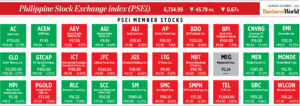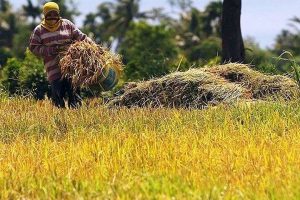The ‘invisible hand’ or the ‘visible hand’?

A basic economic concept I learned in school is the “invisible hand” — the metaphor Adam Smith used for the unseen forces of self-interest moving prices and production to meet at an “equilibrium point” where the demand and supply curves meet. “It is not from the benevolence of the butcher, the brewer, or the baker,” Smith wrote, “that we expect our dinner, but from their regard to their own self-interest.” Self-interest, therefore, makes markets self-correcting, self-regulating, and self-sustaining in terms of what to produce, what to charge, or how to organize distribution — as if guided by an “invisible hand.”
I explored whether the invisible hand thesis may explain why smallholders turn to illicit opium and coca cultivation in Afghanistan, Myanmar, Colombia, and Bolivia. It did not. Instead, what I found more useful was the visible hand of political entrepreneurship, interdependent relationships, and the metrics of precarity. I believe this story offers useful lessons for economists in the Philippines and elsewhere.
A dominant version of the invisible hand is embedded in claims made by various agencies tracking the illicit drug trade. In 1999, the UN Office on Drugs and Crime (UNODC) said that “prices are among the most complex indicators of markets, reflecting not only the interaction of supply and demand but also various other factors relating to quality (purity), competition, and risk.” Prices, therefore, provide market-based signals that influence the decision of producers, traders, consumers, and other actors. Hence, when drug price data is analyzed, weaknesses and vulnerabilities in the market and structure of the illicit drug economy may be identified and exploited, and thus contribute to a more effective counternarcotics strategy.
There are problems with such an approach, however. Firstly, there is an empirical anomaly — the expected higher prices triggered by reductions in supply due to tougher law enforcement have generally not emerged in practice. From 1990 to 2005, for example, researchers found that the prices of cocaine and heroin in Western Europe and the US dropped by 50% to 80%, despite intensified wars on drugs globally and the 1998 launch by the UN General Assembly of a 10-year program for a “drug-free world.” It is as if the actual market went against the so-called “law” of supply and demand. Second is the chicken-and-egg problem — are price levels a cause or consequence of movements in the supply and demand curves? I dove into actual historical cases to probe further.
The first case I examined was Bolivia. Sometime in June 1980, poor subsistence farmer Paulino Vasquez was on his way to the town of Chimore to sell the 100 pounds of coca leaves he carried on his back, worrying about wildly fluctuating prices. Paulino was interviewed by Bolivian economist Roberto Laserna. In February, Paulino got P6,000 for a similar 100-pound load (about US$240). However, in April and May, the prices dropped to about P1,500 ($60). At least, Paulino reassured himself, coca always had buyers, unlike his other crops. Moments later, a truck driver pulled up and offered P16,000 ($640) for his coca leaves. The unexpected price rise and Paulino’s windfall began what Laserna described as Bolivia’s “coca boom” of the 1980s.
In 1980, Bolivia’s economy was collapsing due to the sharp decline in the global prices of its main exports — tin and gas. Suddenly, mine workers were unemployed, foreign currency ran scarce, and debt service payments multiplied. As the financial crisis deepened, inflation started to spiral out of control — reaching a staggering 8,000% by some accounts. On top of these economic convulsions were political crises. Between 1978 and 1982, there were three general elections and 10 presidential changes — four by military coup, three by legitimate processes through Congress, and three by internal disputes in the Armed Forces.
A structural adjustment package was prescribed by international creditors led by the International Monetary Fund. Critics called it “The Brick” that was dropped on the heads of the Bolivian public. It eliminated food subsidies, canceled almost all price controls, hiked oil prices by 300%, froze government wages, cut government spending, opened Bolivia’s borders to unrestricted imports, and downsized state companies in preparation for privatization. Bolivians eligible for social security between 1983 and 1988 dropped by 61%.
As crisis after crisis and the impact of The Brick overwhelmed Bolivia, coca production, intriguingly, was expanding. Although illicit, coca-growing rapidly rose to become an alternative source of income. The lure of high coca prices induced more migration to the sparsely populated, flat, low-lying eastern provinces, which became the main coca-producing areas. Coca production significantly increased, peaking in 1986-87, thereby acting, according to another expert, James Painter, “as a huge social safety net, absorbing labor from the collapsed mining and industrial sectors, and replacing large portions of dollars previously generated by minerals, gas, and other exports.”
Both Laserna and Painter argued separately that the clandestine coca-cocaine economy facilitated Bolivia’s most radical restructuring of its economy and created the conditions necessary for structural adjustment to work — a matter that international economic experts have never acknowledged.
So, to what extent did the “invisible hand” shape outcomes? Laserna’s answer was that although global demand for cocaine played a role, the crisis conditions, he contends, primarily stimulated and initiated the coca boom. Producing coca and cocaine made sense — like an emergency measure taken because nothing else was working (like a kapit sa patalim — holding tight to the knife’s edge — strategy). He further points out that “whether they were effectively protected, or they simply knew that the possibility of repression was minimal, the illegal purchasers of coca and coca paste exerted tremendous pressure on the coca market, forcing prices to rise rapidly and thus initiating the coca boom.” Actual actors with visible hands in real markets, rather than a predetermined invisible hand of supply and demand, were the main reasons behind price changes.
It thus emerged that illicit crop markets, like it or not, bring a certain level of productivity. It can generate income that can tame crises or relieve pressures in the national economy. Most importantly, coca growing as experienced by Paulino provided predictability and reduced risks, especially because coca harvests “will always be sold.”
To conclude, it seems the “invisible hand” is only an attribution to outcomes generated by what actually are visible hands. The notion of an invisible hand becomes distorted when taken as an a priori metaphor emerging from purely theoretical deduction. Rather, it is posteriori, i.e., it proceeds from observation and experience, as Smith himself used it. It seems, therefore, that while the dynamics of supply and demand are real, whether in licit or illicit markets, there really is no “law” — it is only a suggestion.
To read the other cases, Eric D. U. Gutierrez’s open-access article on “Precarity, illicit markets, and the ‘mystery’ of prices’” is freely available in the The Journal of Peasant Studies. See https://tinyurl.com/yscslccx. He has written on corruption, governance, political families and the conflict in the Muslim areas of Mindanao. Since 2000, he has worked for three international NGOs running programs and policy advocacy in Africa, Asia, and Latin America.




